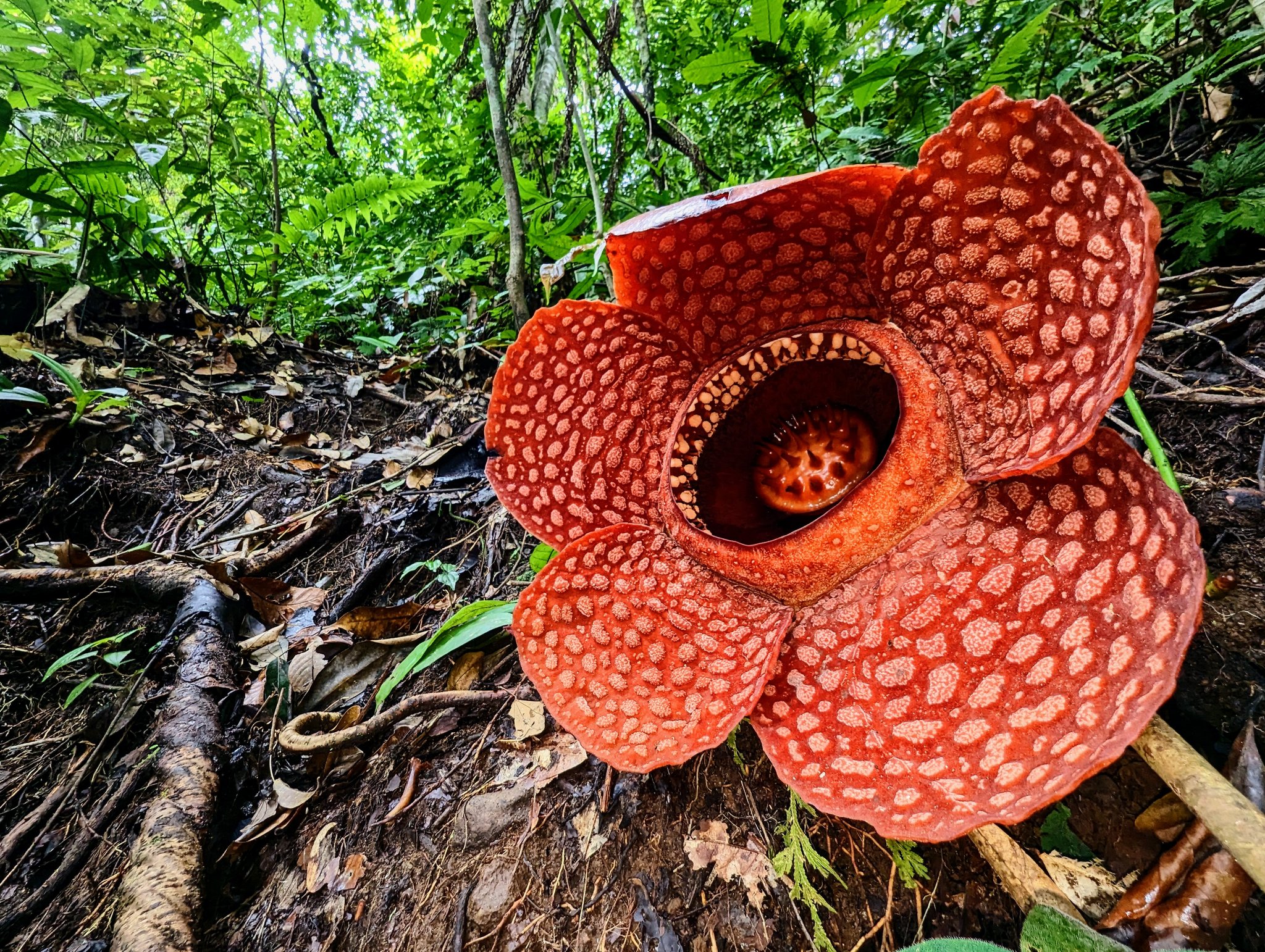|
Last week an international group of scientists issued an urgent call for coordinated
action to save the genus Rafflesia, which contains the world’s largest flowers,
after a new study that shows the plant’s 42 species are severely threatened, yet just one
of them is listed in the International Union for Conservation of Nature’s Red List of
Threatened Species. Over two-thirds of the plants’ habitats are unprotected and at risk of
destruction, said a release from Oxford University.
A parasite that “infects” tropical vines in Southeast Asia, the plant produces “a
cabbage-like bud that breaks through the vine’s bark and eventually forms a giant,
five-lobed flower, up to a meter across,” Oxford explains. “This produces a foul scent of
rotting meat to attract pollinating flies, earning it the alternative name ‘corpse
flower.’ ” The study points to successful conservation efforts by Bogor Botanic Garden in
West Java, Indonesia, and by tourism awareness groups called pokdarwis in West
Sumatra. “Indigenous peoples are some of the best guardians of our forests, and Rafflesia
conservation programs are far more likely to be successful if they engage local
communities,” said Adriane Tobias, a forester from the Philippines. “Rafflesia
has the potential to be a new icon for conservation in the Asian tropics.”
|








